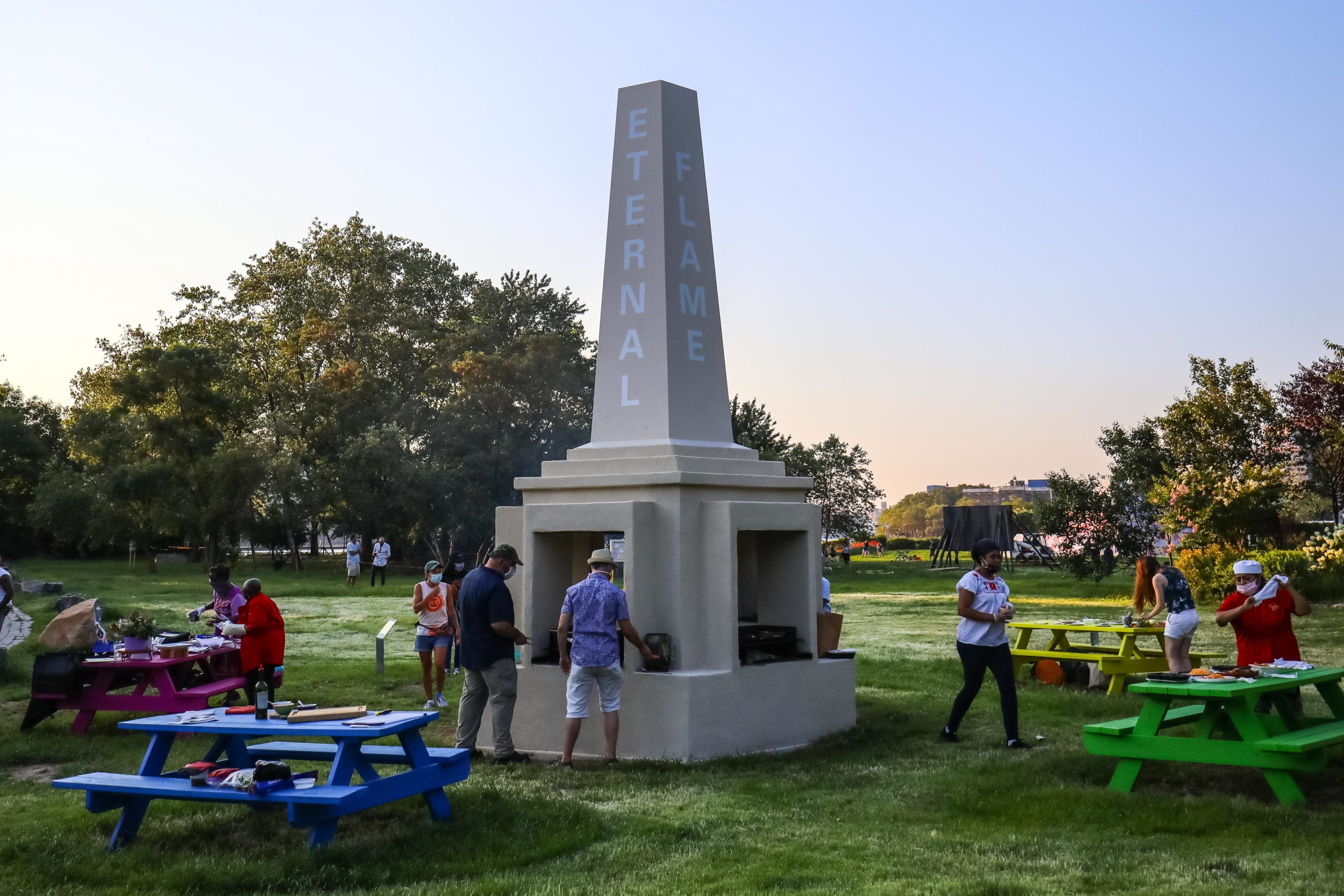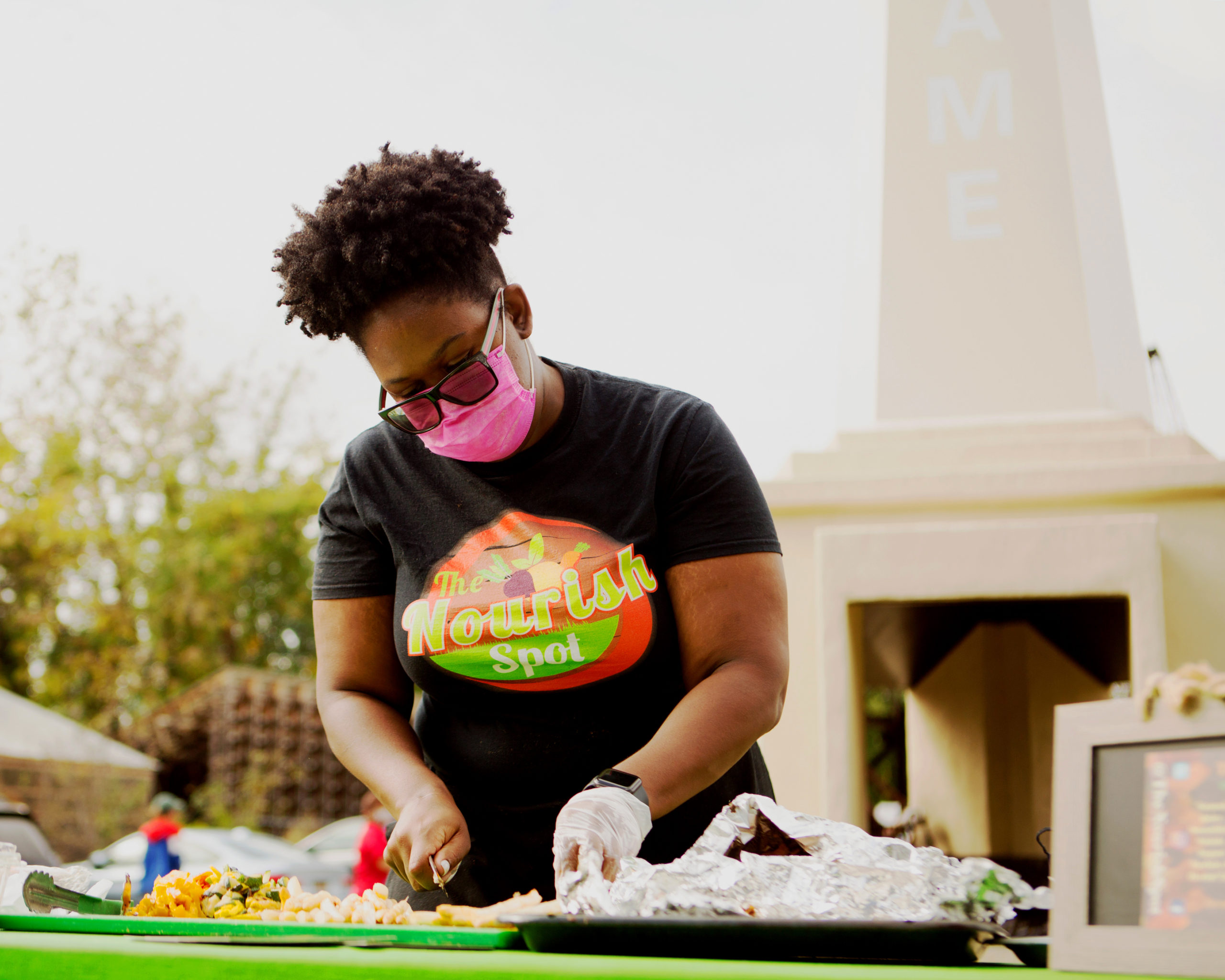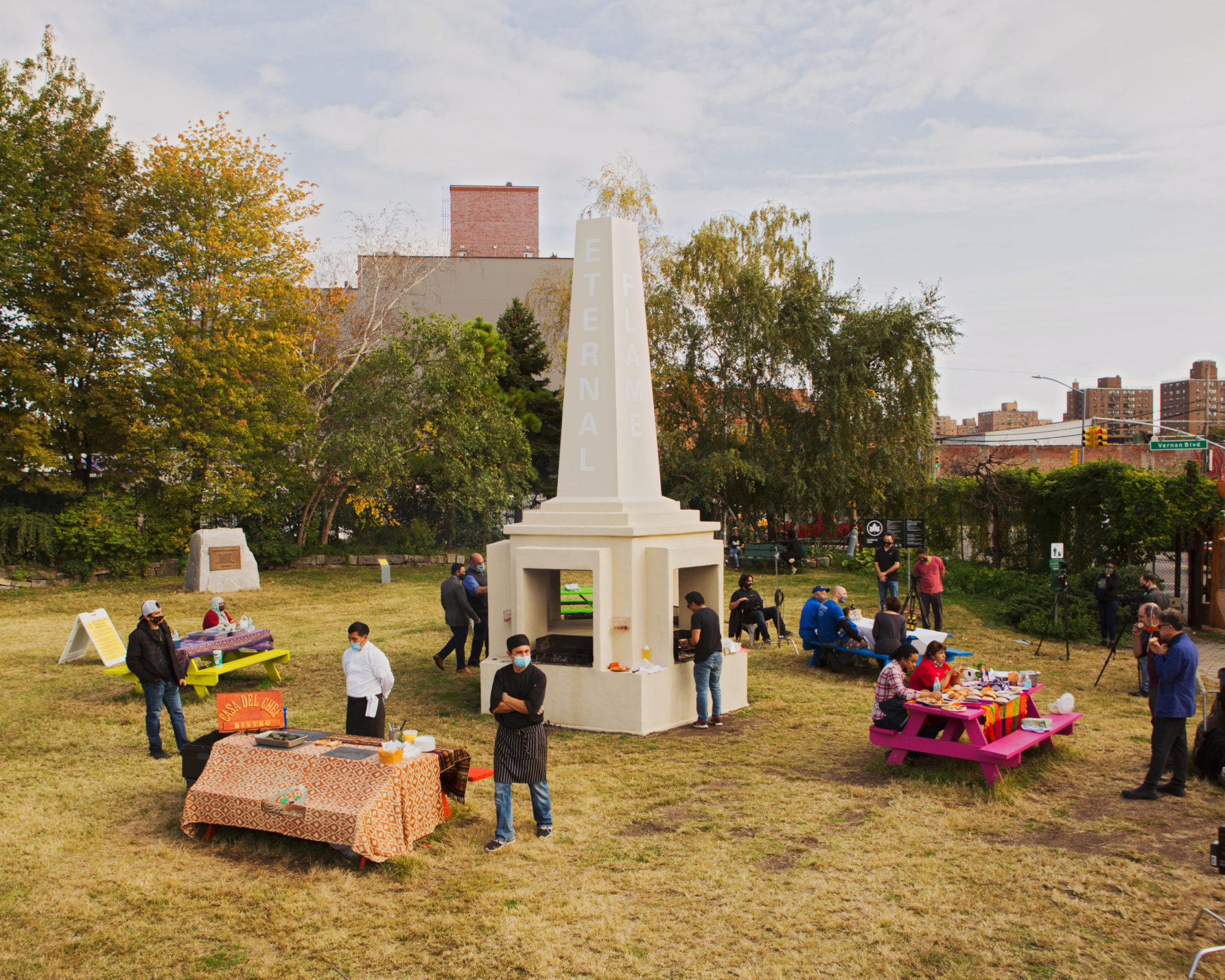Paul Ramírez Jonas

Paul Ramírez Jonas, Eternal Flame, 2020, five BBQ grills, matches, steel, wood, concrete, and smoke, 11 x 11 x 20 feet [photo: Scott Lynch; courtesy of the artist]
Share:
This text originally appeared in ART PAPERS Fall/Winter 2020, Monumental Interventions, as part of a special dossier highlighting seven artists who have fought—and continue the fight—to transform their public spaces by uncovering suppressed histories, resisting oppression, and telling formerly silenced truths.
***
A successful monument for New York–based artist Paul Ramírez Jonas is collectively formed through communal participation, thereby eliminating the authorship of an individual maker. The success of his monumental artworks depends upon Ramírez Jonas’ trust in people, and his willingness to accept and care for what they bring to the work. Ramírez Jonas creates public artworks that are transactional—they require viewers to give something of themselves to fully enact the work’s concepts. Within his multimedia practice, Ramírez Jonas has created works that invite participants to give their house keys, fingerprints, or even blood. In exchange he offers a unique communal performance that interrogates the rituals of citizenship and the shaping of history. This democratizing framework creates the potential for participants to engage in exchanges that complicate the conventional top-down power dynamics of state-sponsored monuments.
Paul Ramírez Jonas, Eternal Flame, 2020, five BBQ grills, matches, steel, wood, concrete, and smoke, 11 x 11 x 20 feet [photo: Mary Kang; courtesy of the artist]
Paul Ramírez Jonas, Eternal Flame, 2020, five BBQ grills, matches, steel, wood, concrete, and smoke, 11 x 11 x 20 feet [photo: Scott Lynch; courtesy of the artist]
Ramírez Jonas’ Eternal Flame (2020) is utilitarian and irreverent. A response to the isolation of quarantine and social distancing stemming from COVID-19, Ramírez Jonas’ five-sided obelisk structure invites participants to appropriate the symbol of the eternal flame—one that is universally sacred—by contributing food, gathering safely, and quelling the internal flame of hunger by eating. He re-imagines the flame as eternal connections made through generational and global exchanges of food culture. An open bay on each of the structure’s five faces contains a functional barbecue grill. Together, Ramírez Jonas and participants transform the eternal flame—typically used to commemorate death—into one of life and community. Eternal Flame, in its form and function, problematizes the untouchable elements of monumental structures by creating a work that is intended to be touched and used. In a nation where symbols are often divisive, Ramírez Jonas reveals the potential of appropriating monument aesthetics to bring people together.

